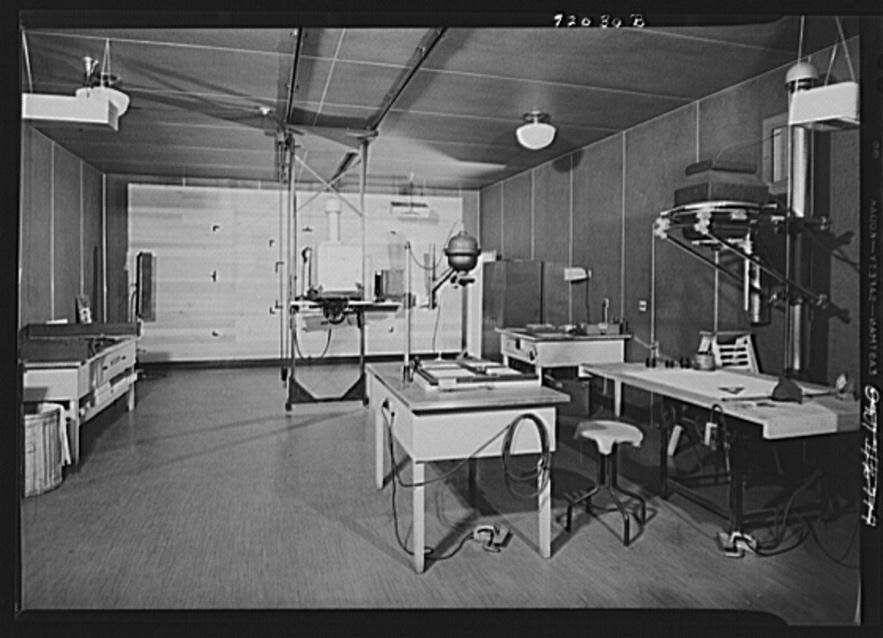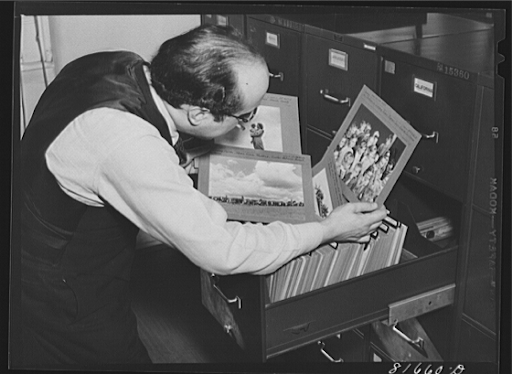The 170,000 photographs taken between 1935 and 1944 under the direction of the Farm Security Administration (FSA) and the Office of War Information (OWI) constitutes one of the richest photographic archives in the United States, arguably the world. One of the most famous documentary photography collections of the twentieth century, the “Historic Section” created visual evidence of government initiatives alongside scenes of everyday life during the Great Depression and World War II across the United States. Photogrammar provides tools to explore this abundant archive: maps to see photos taken in thousands of locations across the United States, a “treemap” to explore them categorically and thematically, a timeline to concentrate on a given moment in time or a specific photographer, and individual photographer pages with oral histories.
October 29, 1929, more infamously known as Black Tuesday, exacerbated a crisis that would become one of the most dramatic economic downturns in American history: the Great Depression. Millions of Americans were unemployed or underemployed as banks failed and market demand for products plummeted. Confidence in the very foundations of capitalism and government also quickly evaporated. By 1933, over 15 million Americans were unemployed. With the election of Franklin Roosevelt came a shift in policy from the Hoover years. The government focused first on relief followed by recovery and then reform. The set of programs that became known as the first New Deal created over thirty agencies and an extraordinary expansion of the federal government. Among the agencies was the Resettlement Administration (RA), which was established in May 1935 to relocate struggling families to planned communities. The RA came under immediate scrutiny. Looking to persuade the public about the value of their work, agency chief Rexford Tugwell created the Historic Section of the Resettlement Administration and hired Roy Stryker to lead the unit. The section would quickly become one of the most important documentary projects of the twentieth century.

Initially, the Historic Section photographers focused on depicting the need for government relief and the success of New Deal policies. Staff in Washington D.C. processed, organized, and circulated the photographs. As images from photographers such as Dorothea Lange and Arthur Rothstein flowed in, staff members like Edwin Rosskam selected images for major publications and created exhibitions. Women such as Charlotte Aiken and Helen Wool managed the finances and daily administrative tasks that kept the unit humming. Due to a reorganization, the RA was subsumed into the newly formed Farm Security Administration (FSA) in September 1937.
While supporting New Deal policies was an explicit goal of the project, the purposes of the project exceeded bureaucratic expediency. Spurred by contemporary social science’s interest in understanding people’s daily lives along with an interest in shaping the historical record of the era, Stryker and the unit’s photographers expanded the project into an effort to document America. As Jack Delano stated, “I don't think that either...Roy or Tugwell ever thought of the Historical Section as being kind of a public relations outfit for the Resettlement Administration.” Arthur Rothstein added, “As it went on over the years, Roy became more and more fascinated with making a pictorial record of life in the United States. He wasn't just satisfied with the Resettlement administration-he wanted to photograph everything in the United States. He was interested in everything, anything, all details, everything of significance, some things that were of no significance.” Shaped by a belief in the expository power of photography, the Historic Section also became an archive of daily life during a period of great flux.
As photographers moved about the country snapping away, the reality of world war began to set in. Images of poverty and relief gave way to propagandistic images designed to show a healthy and prospering nation ready to fight. While photographers such as Andreas Feininger and Arthur Siegel captured war preparation, photographers such as John Vachon were free to continue to follow their interests and document the everyday. With the United States’s entry into WWII, the unit moved into the Office of War Information. The writing was on the wall for the unit. With the help of Helen Wool, Stryker guaranteed the relocation of the collection, known as “The File,” to the Library of Congress in 1942.
"The work we did can be appreciated only when the collection is considered as a whole. The total volume, and it’s a staggering volume, has a richness and distinction that simply cannot be drawn from the individual pictures themselves,” stated Roy Sryker in 1975. Photogrammar reorganizes this archive using methods from the digital humanities to convey the scale and scope of this acclaimed documentary project.

Of the 170,000 photographs in the collection, approximately 88,000 were printed and placed in public filing cabinets at the Library of Congress. Paul Vanderbilt joined the FSA-OWI in 1942 and created a new organizing system for the collection. He developed the Lot Number system and Classification Tags system, which users can search the collection by on Photogrammar.